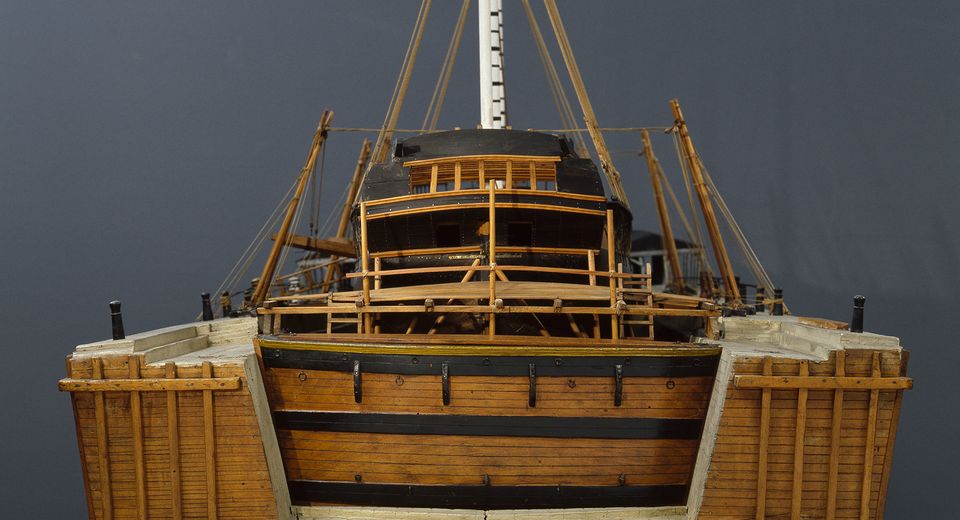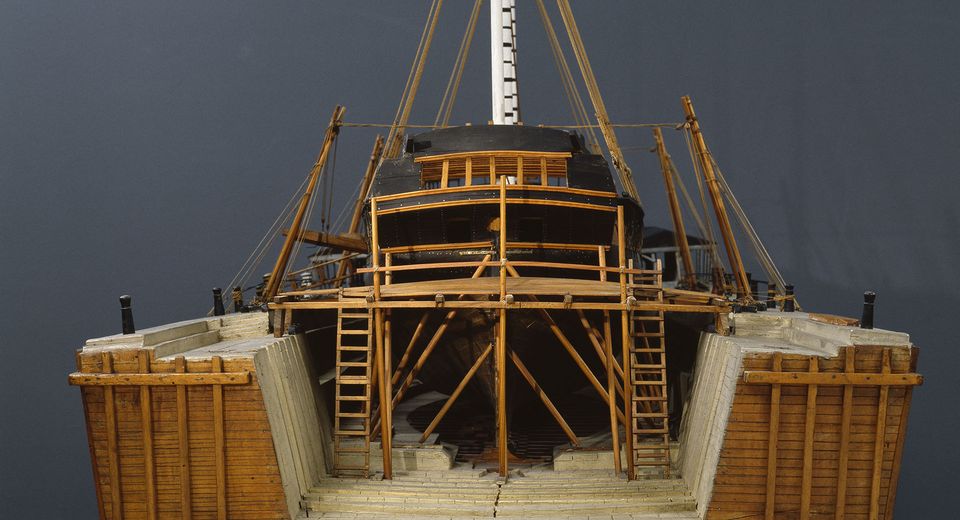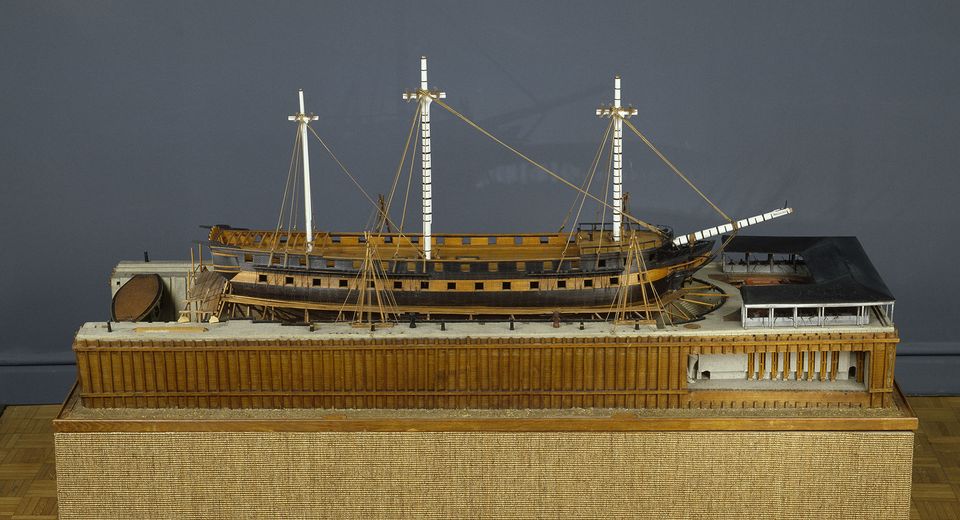Dry dock no.1 in Toulon (1774-1778)
Toulon
Attributed to the model workshop of the Toulon arsenal on the plans of Antoine Groignard, naval engineer 1778
This remarkable piece of work was the first dry dock to be commissioned on the Mediterranean coast and is still in operation today, a few metres from the Museum.
The dock
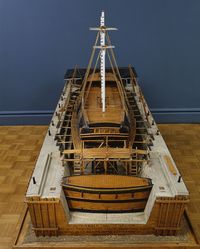 Enlarge image : Wooden model
Enlarge image : Wooden model
In the second half of the 18th century, despite numerous attempts to rectify the situation, Toulon was still waiting for its dry dock (under repair). The absence of strong tides and existence of springs made open-air construction impossible. In 1774, the naval engineer and constructor Antoine Groignard (1727-1799) came up with a dry-dock project that was commended by the Academy of Sciences.
Groignard designed a huge oak box, 100 metres long, 30 metres wide and 10 metres high, which could be submerged, ballasted and supported on the bottom by pilings. All that remained to be done was pump out the water, a job carried out by convicts 24 hours a day throughout the construction period in order to keep the enclosure dry, and finally build the dock’s walls using dressed Cassis stone. For the first time in Toulon, the completed facility enabled ships to be maintained and repaired without having to beach and careen them. In 1778, after four years of work, the Mediterranean coast’s first dry dock was commissioned, the present-day “Bassin Vauban no.1”. It is still in operation more than two centuries after its inauguration.
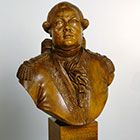
Antoine Groignard
Was born in Solliès-Pont in Var on 4 February 1727 and died in Paris on 26 July 1799. In 1744
After completing his schooling at the Collège de l’Oratoire in Toulon, where he acquired the principles of geometry, drawing and construction, he was sent to Paris to be taught by Henri-Louis Duhamel du Monceau (1700-1782). He started his career as Assistant Naval Constructor, gradually rising in the ranks to become Director of Naval Constructions in Brest. Over the course of his career, he built or drew up plans for at least 39 ships of the line, 18 frigates and 4 store ships.
Collection highlight
The essential works to see during your visit to the Musée national de la Marine in Brest, Port-Louis, Rochefort, Toulon, and soon in Paris.

